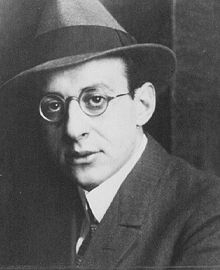1. View of Human Nature a. A Gestalt means a whole, and according to Fritz Perls
 Gestalt therapy is based on the person feeling whole or complete in their life.
Gestalt therapy is based on the person feeling whole or complete in their life.
b. Gestalt therapy is considered to be a here-and-now therapy focusing on awareness with the belief that when one focuses on what they are and not what they wish to become, they become self-actualized. The idea being that through self acceptance one becomes self-actualized.
c. The Gestaltists believe that the individual naturally seeks to become an integrated whole, living productively.
d. Gestaltists are antideterministic because they believe that people have the ability to change and become responsible.
e. Gestalt borrows heavily from the viewpoints of existentialist, experientialist, and phenomenologicalist with the emphasis on the present and awareness. Gestalt focuses on the client’s own inner world of interpretation and assessment of the present life situation
f. Gestaltists believe that individuals emphasize intellectual experience, diminishing the importance of emotions and senses, resulting in an inability to respond to the situations or events in their life
g. Gestaltists believe that thoughts, feelings, and reactions to past events or situations can impede personal functioning and prevent here-and-now awareness. The most common unfinished business is that of not forgiving one’s parents for perceived mistakes in one’s parenting.
h. Awareness is considered on a continuum with the healthiest person being most aware. These people are aware of their needs and deal with them one at a time. The emphasis in on reality and not on embellished or imagined needs. The individual recognizes their internal need and meets that need through manipulation of the need and the environment.
Difficulty may arise in several ways:
i. Loss of contact with the environment and its resources.
ii.. Loss of contact with self through over involvement with environment.
iii. Fail to put aside unfinished business.
iv. Loss the Gestalt resulting in fragmentation or scattering.
v. Experience conflict between what one should do and what one wants to do.
vi Experience difficulty with life’s dichotomies, i.e. love/hate, pleasure pain, masculinity/femininity.
2. Role of the Counselor
a. The counselor creates an environment for the client to explore their needs in order to grow.
b. The counselor is fully with the client in the here-and-now with intense personal involvement and honesty.
c. The counselor helps the client to focus on blocking energy and to positively and adaptively use that energy.
d. The counselor also helps the clients to discern life patterns.
e. Among the rules that counselors use to help client:
i. The principle of the now requires the counselor to use present tense.
ii. I and Thou means that the client must address the person directly rather than talk about them or to the counselor about them.
iii. Making the client use the I instead of referring to own experiences in the second (you) or third (it) person.
iv. The use of an awareness continuum that focuses on how and what rather than on why.
v. The counselor has the client convert questions into statements.
vi. DSM-IV categories and standardized assessment is not considered necessary within this theory (Gladding, 1996)
3. Goals
a. The emphasis is on the here-and-now of the client’s experience
b. The client is encouraged to make choices based on the now as opposed to past
c. Help the client resolve the past
d. Assist the client to become congruent.
e. Help the client to reach maturity intellectually.
f. Help the client shed neuroses.
4. Techniques
a. Techniques in Gestalt therapy one of two forms, either an exercise or an experiment
i. Exercises include activities such as:
- frustration actions
- fantasy role playing
- fantasy
- psychodrama
ii. Experiments are unplanned creative interventions that grow out
of the here-and-now interaction between the client and the
counselor.
b. Dream work in Gestalt therapy consist of the client telling the dream and then focusing their awareness on the dream from the perspective of each character or element in the dream.
e. Empty chair is a process where the client addresses parts of the personality , as if it were an entity sitting an empty chair. The client may switch perspectives by switching chairs or may simply address the chair. The technique is contraindicated for severely disturbed clients.
f. Confrontation is another of the Gestalt exercises that is very powerful. Basically, the counselor calls attention to the incongruence between the client’s verbalizations and observed emotions or behaviors.
g. Making the rounds is a group exercise in which the client is instructed to say the same sentence to each member of the group and then adding something personal to each person.
h. I take responsibility is the phrase that follows each statement expressing statements or perceptions that the client states. The process is to help the client to integrate their internal perceptions and their behaviors.
i. Exaggeration is over-dramatizing the client’s gestures and movements to help gain insight into their meaning.
j. May I feed you a sentence is the question that the counselor asks before giving the client a more specific expression of what the counselor believes is the underlying message of the client.








































